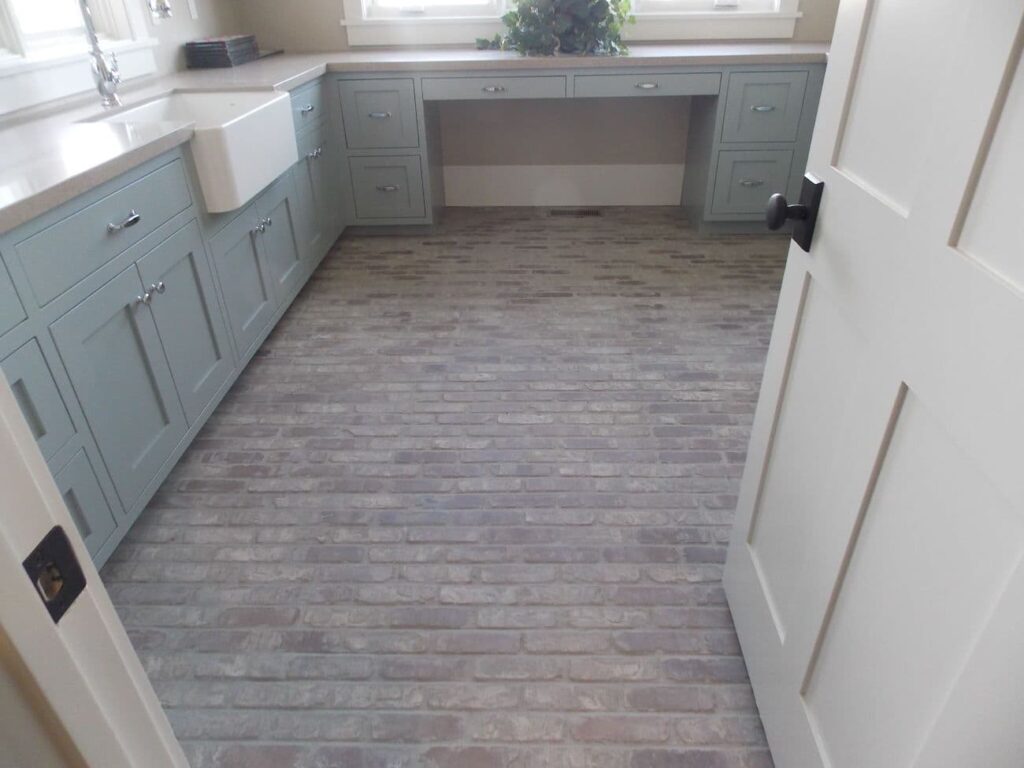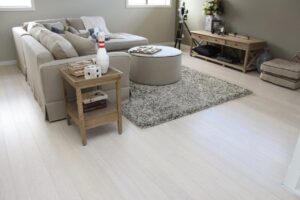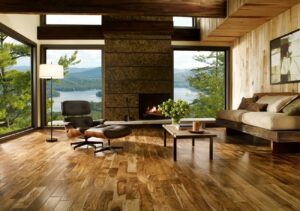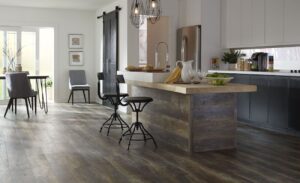Here is another home flooring design that would make you amazed at; Brick Flooring. Have you ever imagined how this flooring type will transform your new interior with the touch of a brick look?
In this moment, we are willing to share all about brock flooring including the brick tile flooring and the brick paver ones.
Besides looking for the different types of interior brick floors, we also share the advantages along with the disadvantages, average prices, where to purchase it, installation method and maintenance as well as the main points that are the designs and patterns ideas.
Well, there seems a lot to get through so let’s start from a basic information about the brick. True to facts, bricks are one of the most durable and strongest construction of a building material from past to present. They have been widely used for decades dating back to 5000 BC.
Isn’t that incredible?
In the world of bricks, the most commonly used type to build walls and exterior, pavements and roads is the whilst bricks. Recently, using bricks for interior is popularly increasing dealing with the growing popularity of décor styles such as Industrial Chic and Rustic Charm.
Brick floors offer a very specific charm along with terracotta tones and roughish surface to add such texture and warmth to a country comfortable room.
Combined with the sleek modern fittings, brick floors would present a fascinating and rugged counterpoint to contemporary settings.
So let’s go to the types of brick flooring, pros and cons, the different options available and the cost involved in the installation.
Types Of Brick Floorings
There are many types of brick floorings you would choose to build the walls, and the ones you will likely to use for your home compliment are indoor brick floors.
Whilst bricks are mainly constructed from materials of clay and shake. This style of brick us usually referred to brick paver or brick veneer flooring. Sometimes, it is rather confusing to call whether a brick is a brick tile of brick paver.
Brick floor is typically designed with the ¼ to ½ inch thickness while the width and length will be different from one to another depending on the manufacturers.
Using this brick indoors usually make sense due to its thinness for an easier transition to another different type of flooring.
Brick floor is also designed with the core holes running through, making it more cost-effective to be produced by the manufacturers. Further, brick bonds more efficiently with cement render and mortar, providing a certain amount of the built-in insulation.
On the other hand, brick pavers are solid without air spaces, making them highly tough and able to stand out with the heavy loads. This is one of the reason why people tend to use brick pavers for outside flooring like patios and driveways.
Overall, whilst brick flooring is constructed from clay and shale which makes it completely different from the other types.
Further, indoor brick flooring comes with a number of different color tones and styles. The natural clay powders can be great addition to create colors of black, brown, orange, gray, yellow or white effects.
Read Also: Karndean Korlok Reviews
The Pros and Cons of Brick Flooring
Like all types of flooring, there are pros and cons of brick flooring that must be taken into account to ensure that it might be your perfect options.
The Pros
- Distinct Character
Brick flooring has a rustic aesthetic which brings a distinct character for interior space. For modern interior, this kind of flooring offers a rugged edge that works well with the industrial, rustic and shabby chic décor.
- Aesthetic Options
There are various colors and finishes to provide you with the big selection to find the proper look for your space. The textures are available from smooth to very rough options while the layout patterns also vary to enrich the aesthetic options.
- Highly Durable
As we have mentioned, fired clay brick is one of the constructions materials which is highly durable. It can last even for decades.
- Fire Resistance
Brick flooring is fire resistant. It is able to withstand the extreme heat. It is also much more resistant to damage fire than the other type of flooring.
- Naturally Anti-Slip
Walking on the brick floor will never cause you slipped due to the natural anti-slip resistant. If you see they are too rough, waxing can be the best way to finish it.
- Relatively Cheap
Though brick is assumed as the strongest material, it is relatively cheap. If you can carry out the DIY installation, brick flooring project will be much budget-friendly. However, if you hire a professional, you will have such additional cost for installation service.
- Constructed of Natural Materials
Clay and shale which are the materials used to form brick are natural. They are available abundantly on earth. Plus, the whilst bricks are fired to add the high durability and longevity.
- Recyclable
Bricks are recyclable. And reclaimed brick is a green option you can choose.
- Easy Maintenance
Because of the dark color tone, brick is considered good at hiding dirt. However, its rough texture is sometimes more attracting. Overall, all types of brick are easy to maintain. Regular vacuuming and mopping are usually the typical way done to keep the maintenance.
- Warmer Underfoot
Brick is warmer than the porcelain tile. It can be used along with the radiant heating to optimize its heating.
The Cons
- Too distinct
It can be incredibly beautiful to install brick flooring for an interior space. The flooring will give a strong character that is not everyone’s will taste it. However, if you plan to go investing for a property, brick flooring is not recommended.
- Costly to replace
Choosing a brick flooring is sometimes a messy and costly business. Moreover, if you want to replace with another flooring type, the brick must be smashed at first to remove it out of the subfloor.
To have a cheaper option, you can cover your brick flooring with the porcelain tile. However, it doesn’t always work well since all the things are depending on your home projects.
- Not always easy to get 100% good and level finish
Tough brick is easy to install. It cannot be easy to get a 100% good and level finish. That’s why, the subfloor must be as smooth as possible.
Otherwise, the brick floor will show up an uneven surfaces. To minimize this problem, the thing you could do is to prep the subfloor before starting the installation.
- Heavy
Compared to ceramic tile, brink flooring is heavier. They may be more proper for subfloor.
- Hard underfoot
Brick has a very solid surface that many people find it hard to step on. Further, the textures are not comfortable if you walking with the bare foot.
- Very porous
In fact, brick flooring will stain and potentially get mold and mildew. So it is suggested that you properly seal it every 3 to 4 years.
- Toxic adhesive
Adhesive is used to install brick flooring. This will release harmful toxins. So you can opt the more environmentally-friendly glue or mortar for a good choice.
Where to Buy Brick Flooring
Different suppliers and retailers use different terms to call an indoor brick. At the large home improvement stores, you may find brick pavers exclusively for pavers that are suitable more for outdoor use.
And whilst pavers can be technically used for indoors spaces but they look too heavy and thick, unlike the brick flooring.
However, if you ask the salesman for brick veneer flooring, don’t forget to check with the products. You may find the size and styles you want but those are the brick pavers.
Many home improvement stores sell faux brick tile flooring or the brick that looks like porcelain tile. This can be a decent alternative though it is not the real deal. Thus, you must be careful if you choose the authentic clay fired paver.
In this regards, Seattle-based Real Thin Brick or Inglenook Tile can be a great alternative to pavers. That kind of brock comes with a wide range of colors and styles.
Average Prices of Brick Flooring
Brick flooring has a price ranging from $5 to $10 per square foot. This price typically depends on the style of brick paver you are going to select. Note, these process do not include the installation cost yet.
The Installation of Brick Flooring
As we have mentioned, installing brick flooring is fairly similar to installing ceramic tiles. The most important to understand about it is the small size of brick pavers.
So, it would be imperative to start with a subfloor surface. To minimize the brick floor ending up uneven, make sure that the subfloor has already been smooth.
Once you decide on the layout patterns, the next thing to do is use the adhesive to glue the brick paver to the subfloor. Later, seal the pavers and cure the sealant fully before you grout between the pavers.
In this installation process, you will typically take three days to complete. However, it is also much depending on the space you are paving.
Actually, whilst brick is possible for DIY options. But if you are not skillful enough, hiring a pro is much recommended. This way, the installation costs are usually $6 – $8 per square foot.
Alternative Brick Flooring Options
If you fall in love with the brick but you are not sure enough to install it permanently on your home flooring, there are some alternatives to brick flooring options to consider.
Porcelain Tiles That Look Like Brick
There are a hug number of brick looking like tiles that are designed to resemble the real brick pavers.
This way, you can have a flooring looks like brick but it is not. These tiles options are usually thinner than the real brick pavers. They are even lighter and lighter, making them ideal for subfloor that cannot take the heavy flooring materials.
One thing to remember, these tiles are only designed for floors, not the wall.
Brick That Looks Like Vinyl Flooring
Sheet vinyl can be a perfect solution though it might be outdated. This option will be suitable for those who have only a limited budget or who want to remodel the room very often.
Though it is little bit hard to find this kind of products, some manufacturers do produce sheet vinyl along with the embossed designs.
Faux Brick Laminate
Truly, faux brick laminate flooring is crazy but true. So far, it is considered the best alternative to a hardwood that looks like brick.
It is even cheaper than the real brick pavers. It offers a realistic brick look with the underfoot warmth of laminate materials.
Brick Flooring Ideas
Some great examples have already been presented throughout the reviews. Generally speaking, brick flooring is good for home designs with the rustic, country and industrial style.
There are also some options of brick flooring you can choose for kitchens, mudrooms and hallways where there are usually heavy traffic. This way, its is highly durable for that.
It can also be used in the bathrooms, bedrooms and anywhere else in the house depending on the overall look you want to achieve.
Read Also: Congoleum Triversa Flooring Reviews
Frequently Asked Questions (FAQs)
Here are some frequently asked questions that you may have on your mind. Perhaps, you have the same questions as follows:
Can I use bricks for both my wall and floor?
Unfortunately, you cannot. There are different types of bricks for the walls and that of for the floors.
Which one would be more affordable, the real bricks or the faux one?
According to the review, the faux brick flooring is much more affordable than the real one.
Will the brick flooring match my farmhouse kitchen?
Absolutely. Brick flooring is designed with the rustic and country style as well as industrial tough. It will match the farmhouse well. So, for your farmhouse kitchen and patio, brick flooring is one of the recommended ideas.





